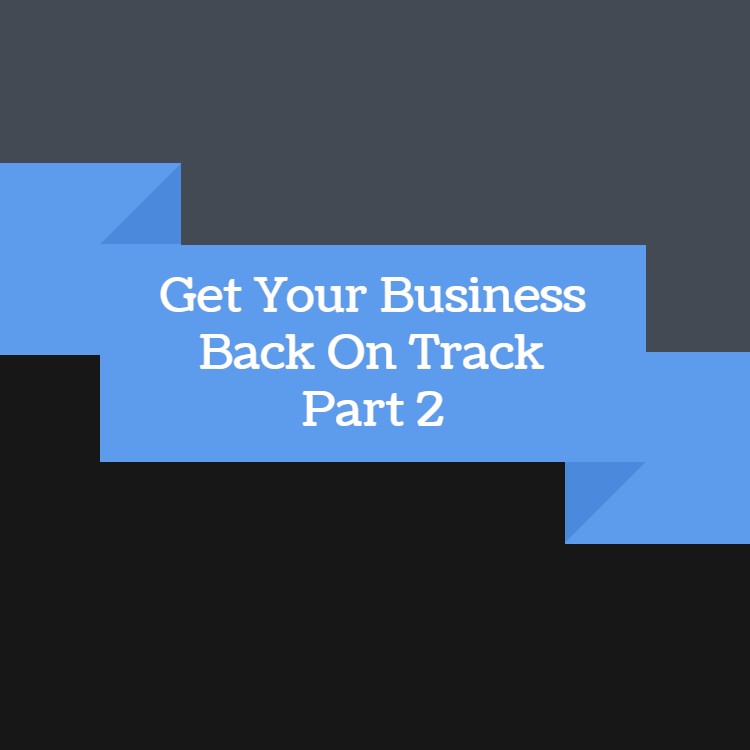To quote a song that will hopefully be an earworm for you, “Every new beginning comes from some other beginning's end.” This song has been my jam as we enter into the second week of 2018.
Why?
Because it’s, “Time for you [and your business to finally] to go out go out into the world.”
Ok, sorry.
I’m done with the lyrics.
But the song applies to the post I promise.
In order to talk about accountability and growth in a non-cheesy and meaningful way it means you have to accept that some things will have to change and what better to serve as a natural inflection point than the New Year. I want to help you kick start your accountability, business planning and goal setting from a slightly different perspective. To do that I’ve prepared a few things I want you to consider as you’re finding your stride in 2018.
Here are five things that I would offer anyone looking to start the year off right.
1. Inventory everything.
Now I’m not saying that you need to painstakingly document every pen and paper clip but for the love of Mike, please have an idea of what you need to do/have to bring your product or idea to fruition. If you want to start a gym then have an idea of what the minimum amount of equipment you’ll need to open your doors. Have a business that sells a physical product - make sure you have some in stock before you start advertising them. Have a restaurant then make sure you have the ingredients to provide what you have listed on your menu. Everyone is always busy and even more so this time of year so ensure your customers stay happy by making sure you have what they expect you to have when they are ready to engage with you.
2. Cash Flow.
Ever been on a cruise ship? Well they know exactly what they need as cash inflows from each passenger on the cruise to make it a profitable one. They have inventory and supply chain procedures that would give Wal-Mart a run for their money. Understanding your cash outs and ins is something that small businesses don’t pay enough attention too. Most of the time, in my experience, they just pay the bills as they come in and deposit the revenues for the day. That’s all well and good but what kind of analysis are you doing so that you can keep steering your business in the right direction. Just because you’ve managed to keep your doors open (physical or digital) doesn’t mean that you are successful. It just means you’ve been paying your bills on time. Plus how do you know what’s working and what’s not if you aren’t keeping score on how efficiently you are allocating your resources.
3. Time Management.
How do you keep track of your hours in the day? I’m not just talking about the billable time or the time that you play shopkeep. I’m talking about all the rest of the work that needs to be done. Are you making time for the administrative tasks appropriately or are you just throwing everything into an office and hoping that as more time passes things will just work themselves out. Time is just like money - it’s a scarce resource. You want to make sure you are doing something to so that you are maximizing the time you choose to be working. Remember just because you throw hours at a project doesn’t mean it’s going to be good - I’d take deliberate and focused time over brute strength over-work any day of the week. Extra point: make sure you make the most out of your sleep time. I’ve just started tracking my sleep habits and I’m already impressed by how little changes can make me feel amazing the following day.
4. Don’t stop learning.
There is always better ways to do stuff. There are always new tactics and lessons to be learned. So make sure you allocate some of that scarce resource, that is your time, to developing your skills. Personally I’ve been working on my Photoshop skills and I’m having a blast doing it. I will probably never dawn the title of graphic designer but understanding Photoshop will help me deliver better products more efficiently to my clients. This could apply to leadership, being an entrepreneur, a language, and even managing Quickbooks. (I would definitely recommend Freshbooks though if you are looking for a finance manager.)
5. Stop saying and just do. (Just in case you need a little more support.)
In the last 2 weeks I’ve seen a plethora of articles and posts all about getting you to achieve your goals. Everything from journaling to sharing your goals on social media to create some accountability. While those tips are great they aren’t going to do what needs to be done to get your goals accomplished - you are!! Why would I tweet something if my audience can’t really hold me accountable? Facebook statuses fly by with the speed and fury of a passing fighter jet and most people are just creeping their friends or friend’s photo’s - is that really a place to tell the world you are ready to take your business to the next level? I’m guilty of this too. I download productivity habit tracking apps, I journal for revenue growth, and I’ve even told my friends and family of new happenings. Sometimes those things don’t happen and it’s because I (and you) are great rationalizing machines especially when something feels or seems like it will be work. To get past that you have to start and keep yourself on an action train. Start doing and then keep doing - it’s the only way you will get things done. The GTD is an example of a method that is really great for helping you strategize but don’t get too preoccupied in the planning. Sometimes “good enough” is what you need to get on to the next task.
I hope this list helps. I know they all aren’t necessarily connected but each of them is important if you want to get your business or life moving in a positive direction. Especially number five. So to recap: take stock of your stuff and money, keep learning to keep yourself as efficient as possible, do work, and limit how long you spend playing in online scavenger hunts for a few laughs.
Like I said, I’m a people too, and I get a little lost and depressed sometimes too. Over the last week or so - I’ve been making a conscious effort to shake that and put my own advice into play. I don’t like complacency and I’m leaving it behind. Feel free to join me!



















